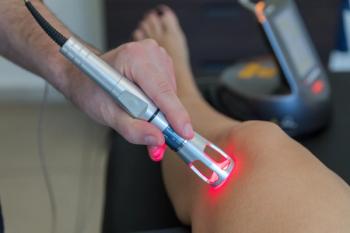
High-Risk Tumors: BCC and SCC
Zeena Nawas, MD, discussed the clinical presentations, evaluation, and management of high-risk cutaneous tumors at the 2022 SDPA Conference.
At the 2022 Society of Dermatology Physician Assistants Conference in Miami, Florida, Zeena Nawas, MD, assistant professor of dermatology at the Baylor College of Medicine in Houston, Texas, gave an overview of high-risk cutaneous tumors such as basal cell carcinoma (BCC) and squamous cell carcinoma (SCC) in her lecture, “Highest Risk Tumors.”
Nawas began her discussion by taking an in-depth look at BCC. BCC is the most common type of skin cancer and makes up approximately 80% of all skin cancer cases. BCC is benign in the basal cells at first and typically affects patients 60-70 years old with fair skin. Environmental factors that contribute to the risk of developing BCC include UV exposure, indoor tanning, ionizing radiation, UVA exposure, and chemicals. There is also an increased chance of immunosuppression in organ transplant patients.
Regarding metastatic BCC, less than 1% of BCCs metastasize, but if they do, they are most likely to travel to the lymph nodes or lungs. The average size of a metastatic BCC can be up to 7.5cm, and the median survival rate is 10 months.
Most BCCs present 70% on the face, 15% on the trunk, and rarely ever develop on parts of the skin that are not exposed to the sun. Nodular BCCs make up approximately 80% of BCC cases and appear as pink, flesh-covered papules. Superficial BCCs make up approximately 15% of BCC cases and are more common in men than women, commonly occur on the trunk, and appear as slightly scaly, non-firm macules. Morpheaform/infiltrative BCC comprises approximately 5%-10% of BCC cases and are frequently atrophic and appear as smooth, flesh-colored light pink papules with ill-defined borders, and it is incredibly high-risk.
“Morpheaform/infiltrate BCC is one of the skin cancers that keeps me up at night,” said Nawas.
Additionally, SCC is the 2nd most common type of skin cancer, with more than 1 million cases in the US per year and 700,000 new cases every year. The estimated lifetime risk of SCC is 10%-15%. The risk factors of SCC include fair-skinned patients, men being more likely to develop SCC than women, and patients older than 80 years old. Environmental factors that contribute to the risk of SCC include long-term UV exposure, indoor tanning, human papillomavirus, and PUVA radiation.
SCC in situ, also known as Bowen’s disease, is recognized by erythematous, well-demarcated, scaly patches and plaques. Invasive SCC is well-differentiated with indurated or firm nodules. Keratoacanthoma is a subtype of well-differentiated SCC that grows rapidly in just a few weeks and typically appears dome-shaped. Verrucous carcinoma is another clinical variant of SCC and has its own subtypes of oral florid papillomatosis and anogenital.
High-risk features of SCC include lesions larger than 2cm and deeper than 6mm. Organ transplant recipients are 100-200 times more likely to develop SCC.
Reference
Nawas Z. Highest risk tumors. Presented at the 2022 Society of Dermatology Physician Assistants Conference; November 17-20, 2022. Miami, Florida.
Newsletter
Like what you’re reading? Subscribe to Dermatology Times for weekly updates on therapies, innovations, and real-world practice tips.

















